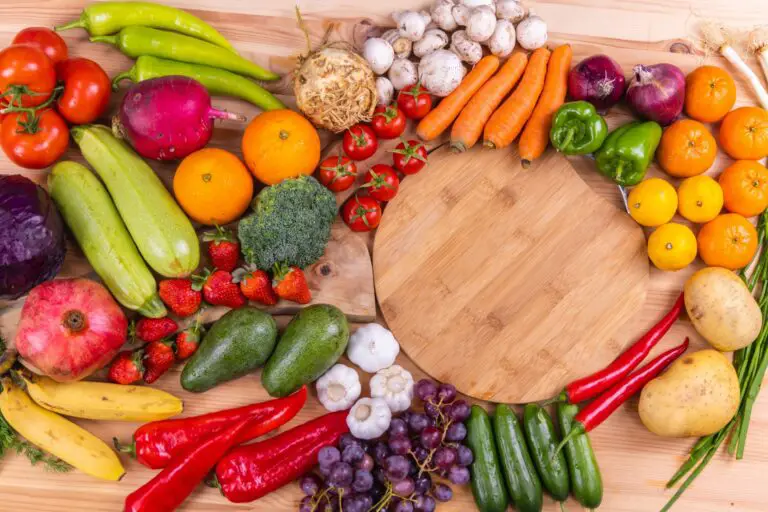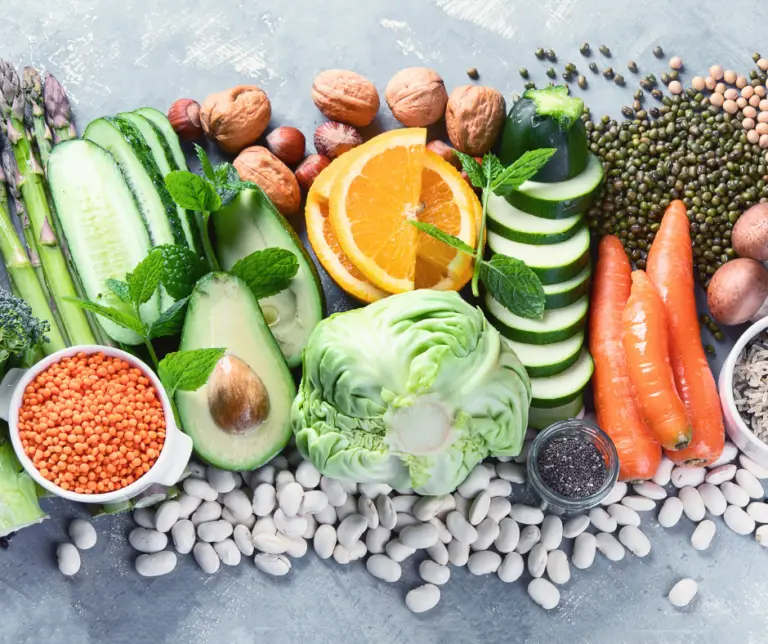9 Healthy Eating Tips

These healthy eating tips will help you to consume a balanced and nutritious diet that provides your body with the essential nutrients it needs to function correctly. This includes eating various whole foods, such as vegetables, fruits, whole grains, lean proteins, and healthy fats while limiting processed and sugary foods. A healthy diet can help reduce the risk of chronic diseases, such as heart disease, diabetes, and some types of cancer, as well as help maintain a healthy weight and improve overall well-being.
Healthy eating also involves paying attention to portion sizes, being mindful of your eating habits, and staying hydrated by drinking plenty of water. It also involves paying attention to your hunger and fullness cues, eating slowly, and avoiding distractions while eating.
9 Healthy Eating Tips
1 – Eat a variety of whole foods
Instead of processed and packaged foods, choose whole foods that are minimally processed, as they often contain more nutrients and fewer additives. For example:
Fruits: Apples, bananas, oranges, strawberries, blueberries, etc.
Vegetables: Broccoli, spinach, kale, carrots, sweet potatoes, bell peppers, etc.
Read more about 10 Health Benefits of Eating Vegetables
Whole grains: Brown rice, quinoa, oats, whole wheat bread, barley, etc. Lean proteins: Chicken, turkey, fish, eggs, tofu, lentils, beans, etc.
Nuts and seeds: Almonds, walnuts, chia seeds, flaxseeds, etc.
Healthy fats: Avocado, olive oil, coconut oil, nuts, seeds, fatty fish such as salmon and sardines, etc.
Dairy: Greek yogurt, cheese, milk, etc. (ideally, choose low-fat or fat-free options)
These are a few examples, but there are many more whole foods. Read more about power foods 10 Healthy Power Foods To Eat . The key is to focus on foods as close to their natural state as possible, without added sugars, preservatives, or artificial ingredients.
2 – Limit added sugars
Try to limit added sugars in your diet, as they can contribute to weight gain and other health problems. Avoid soft drinks and other sugary beverages such as energy, sports, and fruit juices with added sugar. Candy, including chocolate bars, gummy bears, and hard candy. Baked goods such as cakes, cookies, muffins, and pastries. Breakfast cereals, including many types of granola and instant oatmeal. Sweetened yogurt and other dairy products, such as flavored milk. Condiments and sauces include ketchup, barbecue sauce, and salad dressings. Commercially-prepared smoothies and fruit drinks. Also frozen dinners, pre-made sauces and dips, and canned fruits in syrup.
It’s important to check the ingredients list and nutritional label of packaged foods to see if they contain added sugars, as they can be hidden under different names such as high fructose corn syrup, molasses, honey, or agave nectar.
3 – Drink plenty of water
Drinking water helps keep you hydrated and supports many important bodily functions, including digestion, nutrient absorption, and body temperature regulation.
Promotes weight loss: Drinking water before meals can help you feel full and eat less, aiding in weight loss.
Helps flush out toxins: Water is essential for flushing out toxins and waste products from the body, which helps keep you healthy and energized.
Improves digestion: Water helps to soften stool and move it more easily through the digestive tract, reducing the risk of constipation and improving digestion.
Improves mood and brain function: Dehydration can cause fatigue, mood swings, and difficulty concentrating while staying healthy.
Drinking enough water helps keep skin hydrated and can reduce the appearance of wrinkles and fine lines. Also, dehydration can be a common cause of headaches, so drinking enough water can help prevent or reduce the frequency of headaches.
Overall, drinking water is a simple and effective way to support healthy eating habits and maintain overall health and well-being.
4 – Control portion sizes
Overeating can lead to weight gain and other health problems. Try to control portion sizes by using smaller plates or measuring your food.
Controlling portion sizes is important for healthy eating for several reasons:
Helps regulate calorie intake: Eating large portions can lead to more calories than your body needs, leading to weight gain and related health issues. Controlling portion sizes can help regulate calorie intake, making it easier to maintain a healthy weight.
Ensures balanced nutrition: By controlling portion sizes, you can ensure you get the right balance of nutrients in your diet. Overeating of one type of food can lead to deficiencies in other nutrients.
Helps manage blood sugar levels: Large portions of high-carbohydrate foods can cause spikes in blood sugar levels, leading to insulin resistance and other health issues. By controlling portion sizes, you can help manage your blood sugar levels and reduce your risk of developing type 2 diabetes.
Encourages mindful eating: By paying attention to portion sizes, you become more mindful of what you eat and how much you consume. This can help you develop healthier eating habits overall.
Overall, controlling portion sizes is an essential part of maintaining a healthy diet and can help prevent various health issues.
How To Determine A Serving Size
5 – Don’t skip meals
Skipping meals can lead to overeating later on. Instead, try to eat regular, balanced meals throughout the day.
6 – Cook at home
Cooking at home can help you control the ingredients and portions of your meals and is often healthier than eating out. Learn more about Why healthy cooking is important
7 – Limit processed and red meats
Processed and red meats can increase the risk of specific health problems. Try to limit your consumption of these foods.
8 – Include healthy fats
Healthy fats, like those found in nuts, seeds, avocados, and fatty fish, can provide important nutrients and help protect against chronic diseases.
9 – Be mindful of your eating habits
Pay attention to your hunger and fullness cues, eat slowly, and avoid distractions while eating to help you remember your food choices and portion sizes.
Healthy Eating

Me encanta cocinar y escribir, tengo un Certificado de Nutrición de Inicio y un diploma de Nutrición Completa acreditado por CTAA y una Certificación de Entrenador de Salud de Nutrición Keto. Creo firmemente que comer sano es la clave para vivir una mejor calidad de vida. He tomado un curso de Terapia Nutricional que me ha dado las bases para comer saludablemente.











